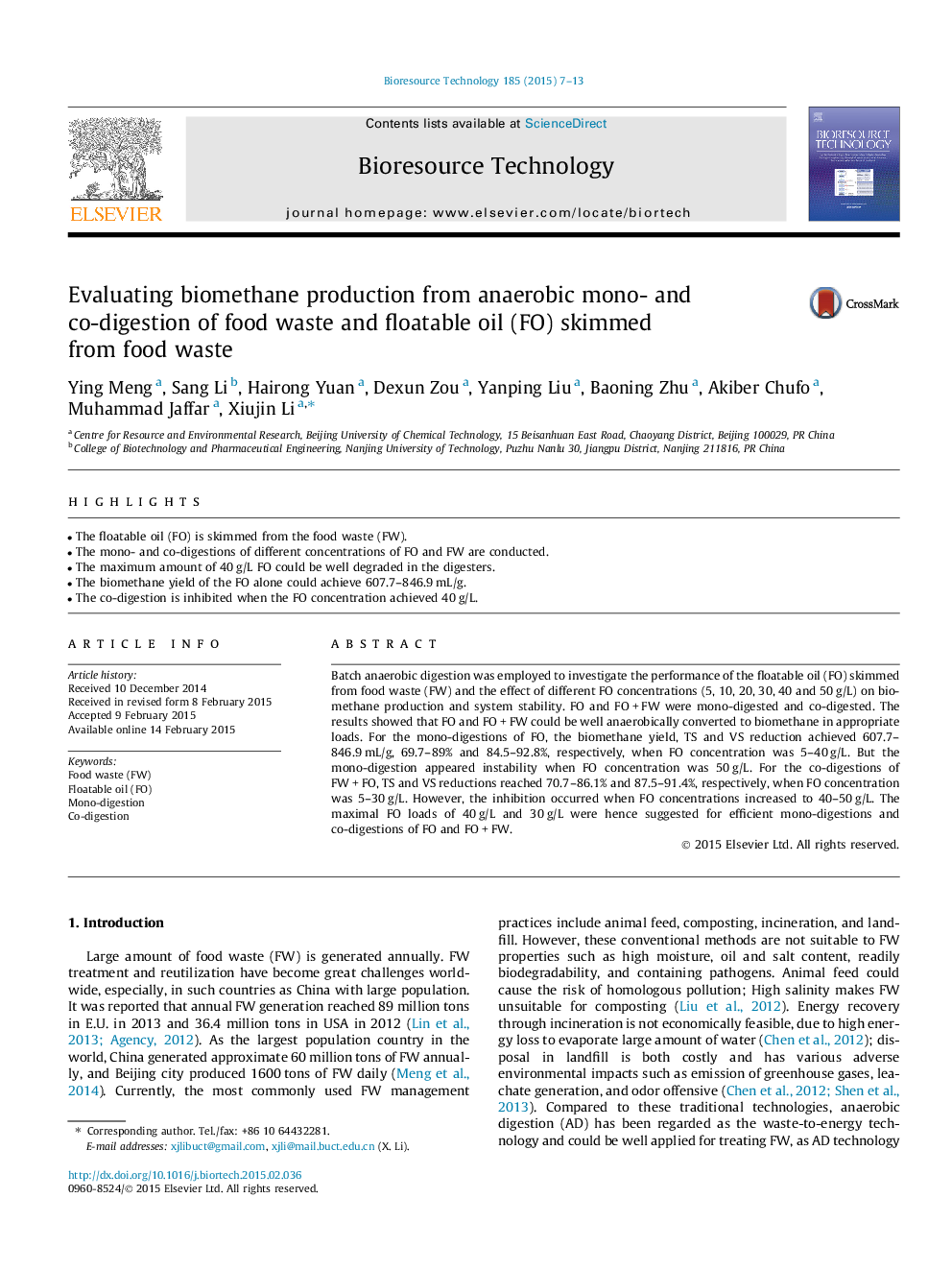| Article ID | Journal | Published Year | Pages | File Type |
|---|---|---|---|---|
| 679801 | Bioresource Technology | 2015 | 7 Pages |
•The floatable oil (FO) is skimmed from the food waste (FW).•The mono- and co-digestions of different concentrations of FO and FW are conducted.•The maximum amount of 40 g/L FO could be well degraded in the digesters.•The biomethane yield of the FO alone could achieve 607.7–846.9 mL/g.•The co-digestion is inhibited when the FO concentration achieved 40 g/L.
Batch anaerobic digestion was employed to investigate the performance of the floatable oil (FO) skimmed from food waste (FW) and the effect of different FO concentrations (5, 10, 20, 30, 40 and 50 g/L) on biomethane production and system stability. FO and FO + FW were mono-digested and co-digested. The results showed that FO and FO + FW could be well anaerobically converted to biomethane in appropriate loads. For the mono-digestions of FO, the biomethane yield, TS and VS reduction achieved 607.7–846.9 mL/g, 69.7–89% and 84.5–92.8%, respectively, when FO concentration was 5–40 g/L. But the mono-digestion appeared instability when FO concentration was 50 g/L. For the co-digestions of FW + FO, TS and VS reductions reached 70.7–86.1% and 87.5–91.4%, respectively, when FO concentration was 5–30 g/L. However, the inhibition occurred when FO concentrations increased to 40–50 g/L. The maximal FO loads of 40 g/L and 30 g/L were hence suggested for efficient mono-digestions and co-digestions of FO and FO + FW.
